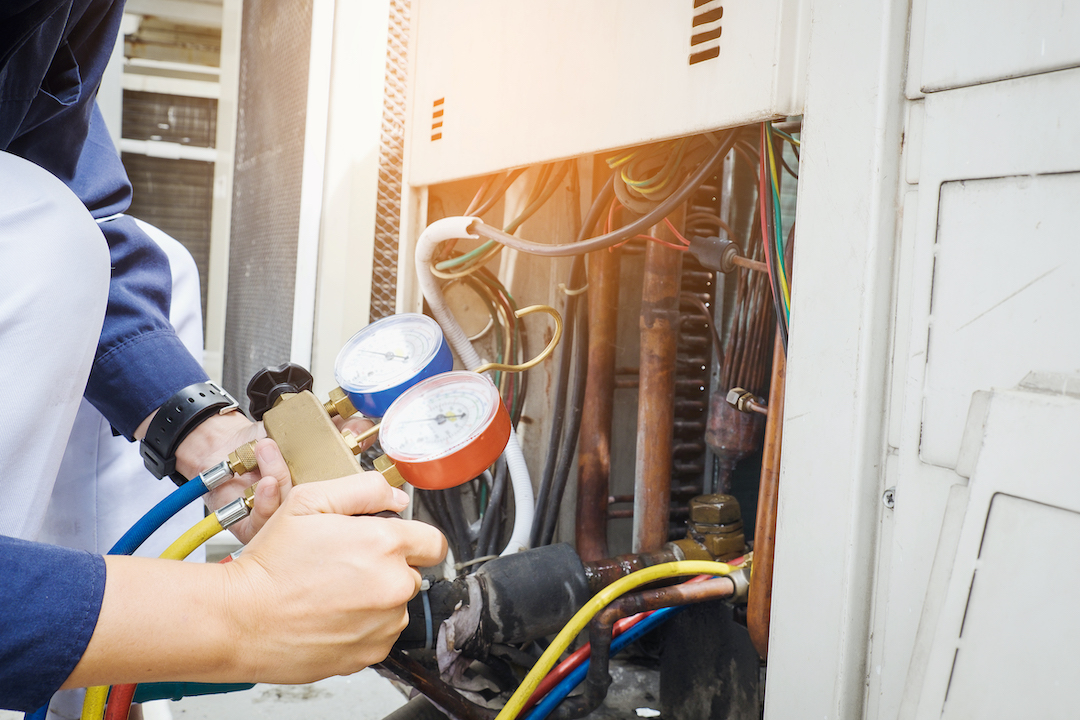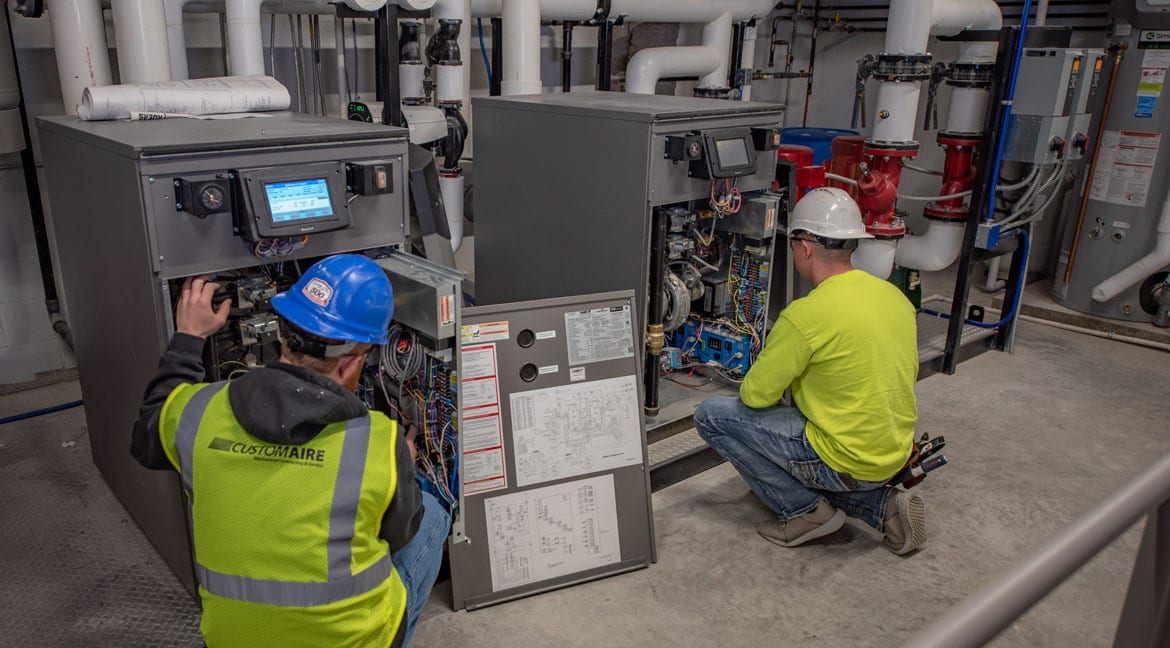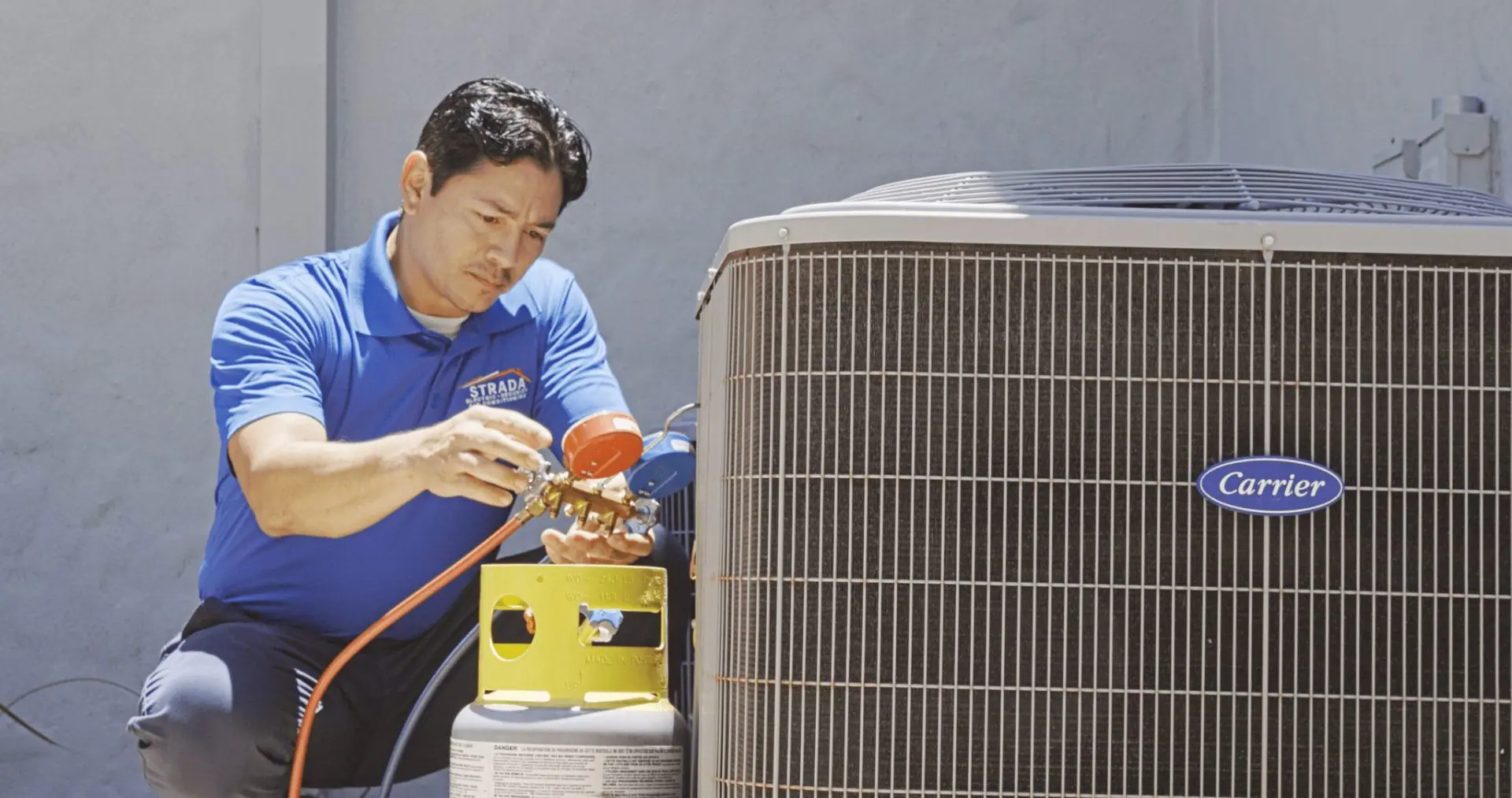How a Warmth Pump and Heating System Work Together to Optimize Your Home's Heating Effectiveness
Recognizing exactly how a heatpump and furnace job with each other is essential for property owners seeking reliable heating options. Each system has its strengths, giving a well balanced technique to home convenience. The heatpump masters moderate temperature levels, while the heater supplies quick heat throughout extreme cold. This harmony not only reduces power prices but additionally boosts the life expectancy of both home appliances. What aspects influence this cooperation, and how can homeowners maximize their benefits?
Understanding Heat Pumps: Just How They Work
Numerous people might be unfamiliar with their inner operations, heat pumps play a vital duty in contemporary heating systems. These gadgets run by moving warmth from one area to one more, utilizing the concepts of thermodynamics. In cooler months, a heatpump essences heat from the outdoors air, ground, or water, and transfers it inside your home to warm the living space. On the other hand, during warmer months, it can reverse the procedure, serving as an ac unit by expelling warm from inside to the outside.Heat pumps include an evaporator, expansion, compressor, and condenser shutoff. The refrigerant within the system takes in warm as it vaporizes at low temperature levels and stress. The compressor then raises the pressure and temperature level of the cooling agent, allowing it to launch warm as it condenses. This reliable process can greatly lower energy consumption compared to standard heating methods, making heatpump a lasting option for environment control in homes.
The Function of Heating Systems in Home Home Heating
Furnaces play a crucial duty in home heating by providing a reliable source of warmth during the chillier months. They operate by producing warmth through burning or electric resistance, distributing it throughout the home through air ducts or radiant systems. The effectiveness of a heater is usually determined by its Yearly Gas Application Performance (AFUE) rating, which shows exactly how efficiently the unit converts gas into heat.Furnaces can use numerous energy resources, consisting of gas, gas, oil, or electrical power, permitting home owners to pick the most suitable option for their needs. Unlike warm pumps, which may struggle in extreme chilly, heaters keep regular performance, guaranteeing that interior temperatures continue to be comfy despite exterior problems. Additionally, modern-day heaters commonly come furnished with advanced technology, such as clever thermostats and variable-speed blowers, improving their effectiveness and responsiveness. This versatility makes heaters an essential component in comprehensive home heating approaches.

Benefits of Using Both Equipments Together
Combining the staminas of both furnaces and heatpump can lead to an extra efficient and efficient home heating remedy. Utilizing both systems allows house owners to make the most of the heatpump's power performance throughout milder temperatures while counting on the furnace for more extreme cold conditions. This twin method can significantly reduce energy costs, as warmth pumps take in much less electrical power than typical heating techniques when temperatures are moderate.Additionally, utilizing both systems with each other can improve convenience degrees in the home. Warm pumps can give consistent, even home heating, while furnaces can swiftly elevate ambient temperature levels when needed. The combination of both systems can prolong the life expectancy of devices by decreasing wear and tear on each system, as they share the workload. Eventually, home owners can enjoy a well balanced, economical home heating option that readjusts seamlessly to varying climate conditions, making sure a warm and inviting home throughout the wintertime months.
Just How Heat Pumps and Furnaces Enhance Each Other
When property owners incorporate heatpump and heating systems, they develop a complementary home heating system that takes full advantage of performance and comfort. Heatpump run by moving warm from the outdoors air or ground, making them highly efficient in modest environments. They succeed during milder temperature levels, giving affordable heating. Alternatively, heating systems create warmth via combustion or electrical resistance, delivering solid, instant heat during extreme chilly conditions.The combination of these two systems permits dynamic adjustments based on temperature level variations. During warmer months or milder winter days, the warmth pump can take the lead, preserving power and reducing costs. As temperature levels decline, the heater can seamlessly involve, making sure consistent warmth throughout the home. This harmony not just enhances power usage yet likewise boosts the life-span of both systems, as each device runs within its ideal performance array. With each other, they produce a well balanced setting that adapts to differing climate needs.
Maximizing Performance: Tips for Homeowners
Property owners can enhance their home heating efficiency through several sensible methods. Establishing a normal upkeep routine, integrating clever thermostat technology, and carrying out efficient insulation and sealing remedies are key steps. These steps not only enhance comfort yet likewise minimize power costs.
Normal Maintenance Arrange
To ensure optimal heating performance, establishing a regular maintenance schedule is crucial for any type of home. Homeowners need to prioritize routine inspections of both heatpump and furnaces to ascertain peak performance. This consists of changing air filters every one to 3 months, as clogged filters can greatly decrease effectiveness. Additionally, organizing specialist upkeep at the very least annually enables technicians to identify and deal with prospective issues prior to they escalate. Property owners need to likewise cleanse the warm pump's outside unit to stop particles build-up that can impede airflow. By index adhering to a regular maintenance routine, house owners not just improve their furnace' performance but also extend their life-span, bring about higher comfort and lowered power expenses throughout the colder months.
Smart Thermostat Combination
Integrating a wise thermostat into a home furnace can substantially improve power efficiency, especially as it enables for accurate control over temperature settings. These gadgets can learn the property owner's routine and choices, automatically readjusting the temperature level to optimize convenience while decreasing power use. For example, they can reduce home heating throughout times when the home is unoccupied, lowering unnecessary usage. Lots of smart thermostats likewise offer real-time energy usage information, allowing property owners to make educated decisions about their heating practices. Furthermore, remote accessibility via smartphone apps permits customers to change setups from anywhere, making sure the home is warm upon return. Generally, smart thermostat integration not only enhances comfort but significantly contributes to energy savings and efficiency.
Insulation and Securing Solutions
Smart thermostats play a crucial duty in power efficiency, however their performance can be greatly improved by appropriate insulation and sealing services. Homeowners must focus on protecting attics, floors, and wall surfaces to minimize warm loss. Premium insulation materials, such as spray foam or fiberglass, can greatly improve thermal resistance. Additionally, sealing spaces around home windows, air ducts, and doors avoids cold air infiltration and warm escape. Weatherstripping and caulking are effective methods for resolving these leaks - heat pump installation ooltewah tn. Normal examinations for air leakages, along with using blower door tests, can aid determine problem locations. By spending in insulation and securing, homeowners can optimize the efficiency of their heating systems, eventually causing reduced energy usage and reduced utility costs
Typical Myths About Warm Pumps and Furnaces
What misconceptions surround warmth pumps and heaters? Several individuals mistakenly believe that heatpump are inefficient in colder climates. Actually, modern-day warm pumps are designed to run effectively also in reduced temperature levels, giving reliable home heating throughout winter. One more common misconception is that heaters are always much more efficient than heatpump. However, this depends upon the particular power sources and performance ratings of the units concerned. Some may additionally believe that making use of both systems all at once is unneeded, but as a matter of fact, this combination can optimize home heating effectiveness, particularly throughout look at this site severe climate condition. In addition, people commonly assume that heatpump require consistent upkeep, when in reality, they have comparable maintenance requires to standard furnace. By disproving these misconceptions, home owners can make more informed decisions regarding their heating options, inevitably resulting in enhanced convenience and power efficiency in their homes.
Upkeep Factors To Consider for Combined Systems

Often Asked Questions
Can Heat Pumps Job Successfully in Incredibly Cold Climates?
Heatpump can battle in extremely chilly climates due to reduced effectiveness and warm removal restrictions. Nonetheless, innovations in innovation have actually brought about models designed for far better performance in such problems, enhancing their stability in extreme settings.
How Much Time Do Heat Pumps and Furnaces Commonly Last?
Heatpump commonly last 15 to two decades, while heating systems have a life-span of 15 to thirty years. Normal upkeep can prolong their longevity, guaranteeing efficient operation visit our website and lowering the need for premature substitutes.

What Is the Ordinary Expense of Installing Both Solutions?
The average price of installing both a heatpump and a furnace usually varies between $5,000 to $10,000 - heat pump service. Elements influencing this cost consist of system dimension, setup complexity, and regional labor rates
Are There Tax Rewards for Using Energy-Efficient Home Heating Systems?
Several house owners ask about tax incentives for energy-efficient furnace. Different federal and state programs often supply refunds or debts, urging the fostering of sustainable innovations to reduce energy intake and promote environmental obligation.
Just how Do I Choose the Right Dimension Heatpump and Furnace?
Choosing the appropriate dimension heatpump and heating system includes determining the home's square footage, taking into consideration insulation top quality, and reviewing local environment. Consulting an expert can assure optimal system efficiency and power performance based upon particular demands. furnace replacement. Recognizing just how a warm pump and heating system job with each other is crucial for house owners seeking reliable heating remedies. In colder months, a heat pump removes warm from the outside air, ground, or water, and transfers it indoors to warm up the living space. When home owners incorporate warm pumps and heaters, they create a corresponding home heating system that makes best use of efficiency and comfort. Warm pumps operate by transferring warmth from the outside air or ground, making them highly efficient in moderate climates. Warmth pumps can battle in extremely cold climates due to minimized efficiency and warmth extraction restrictions